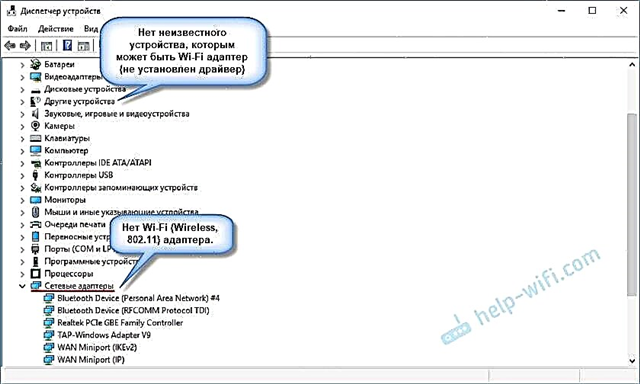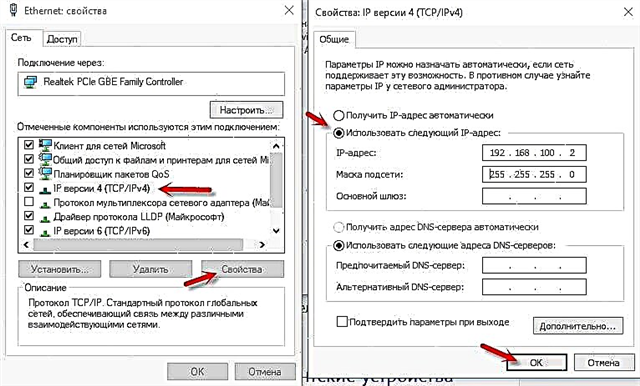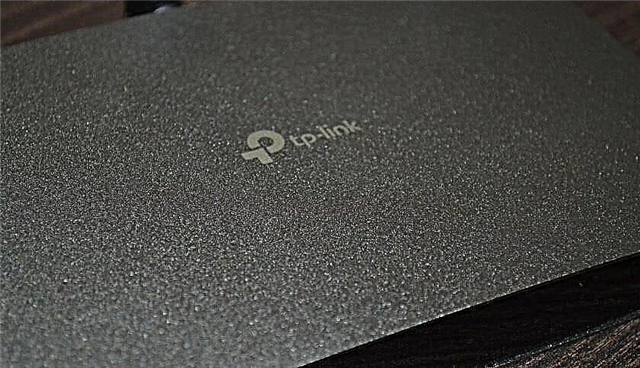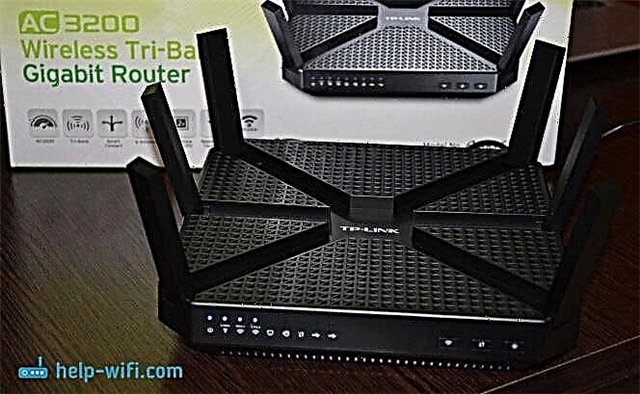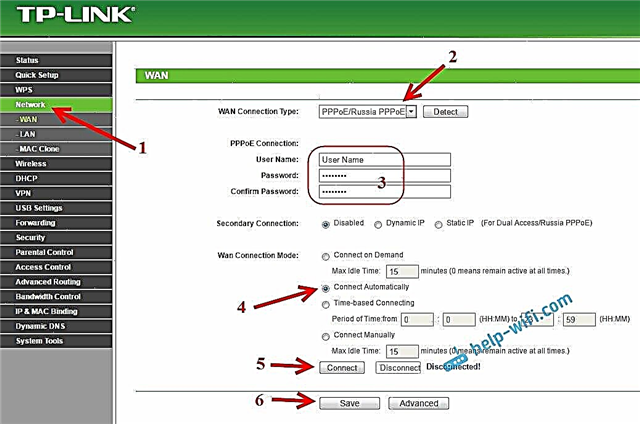Hello! Today we will configure the TP-LINK TL-WR842ND router. As usual, I will show and tell you everything in detail. I have the router myself, I have already taken a photo of connecting the TL-WR842ND, now we will configure it.
Interesting router. If you have already bought it, I think you will be satisfied. It costs a little more than the popular TP-LINK TL-WR841N (ND), but the TL-WR842ND has several advantages. The main advantage is the presence of a USB connector. To TP-LINK TL-WR842ND you can connect a USB flash drive or hard drive, and organize file sharing. Also, you can connect a printer and send documents to print from all devices on the network. And if you have a second hardware version of the router (V2), then you can connect a 3G / 4G modem to the TL-WR842ND and set up the distribution of the Internet. And also, you can run up to 4 Wi-Fi networks, with different settings. And I liked the white antennas more than the black ones.
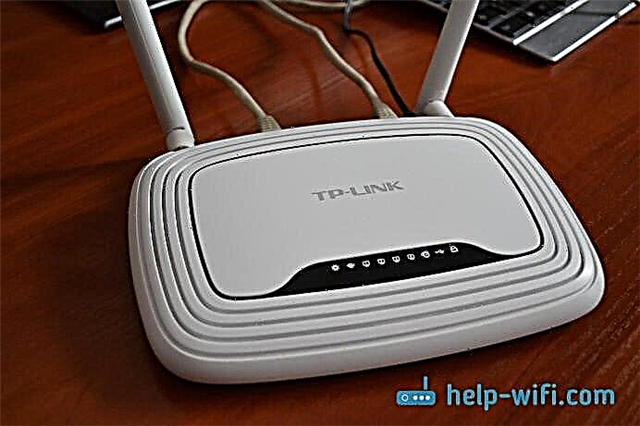
I have a regular TP-LINK TL-WR842ND, hardware version V1. This information can be viewed on the bottom of the router, on a sticker. The control panel is in English, and unfortunately there is no Russian firmware. But, if you have a TL-WR842ND (RU) version, then your settings will most likely be in Russian. I will take screenshots from my device, but I will also write the names of the settings sections in Russian. If you suddenly have a Russian-language firmware.
By the way, you can flash your router before setting up. I have already prepared a separate manual for this model: TP-LINK TL-WR842ND. Updating the firmware.
If you bought TL-WR842ND (V2) to work with a 3G / 4G modem, then you can set it up according to this instruction. We will consider the setup when connecting to the regular Internet via a network cable.
How to connect TL-WR842ND and go to settings
First of all, we get our router out of the box. We connect the power adapter to it, and plug it into an outlet. If you will be configuring from a computer or laptop, then take the network cable that comes with the router and use it to connect the computer to the router. On the router, we connect the cable to one of the 4 LAN connectors. And on the computer to the network card. If you have a computer at home, then I recommend configuring the router using a cable.
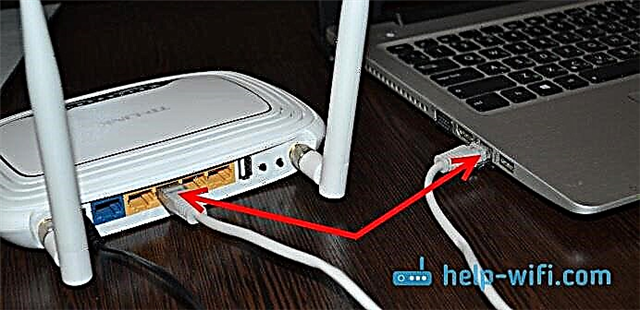
Next, you need to connect the Internet to the WAN connector (it's blue). Cable from your ISP, or from an ADSL modem.
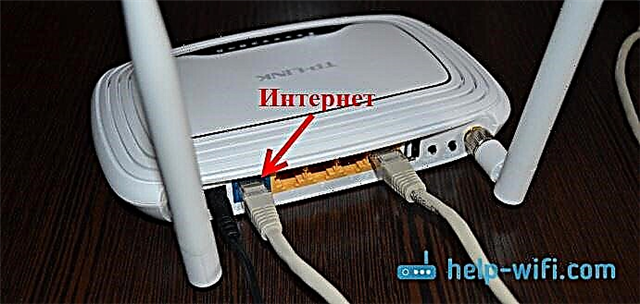
We figured out the connection. If you want to configure the TL-WR842ND router via Wi-Fi, then connect to its Wi-Fi network. If the router is new, it has not been configured yet, then the network will have a standard name, something like this: "TP-LINK_3CE9DA". The network will be open without a password. And if it is closed with a password, then the factory password (PIN) is indicated on the sticker on the bottom of the device.
Login to the control panel
If you are already connected to the router, then open any browser and go to the addresstplinklogin.net, or 192.168.0.1... The address is also indicated at the bottom of the router. There, on the sticker, the factory username and password are indicated: admin and admin.
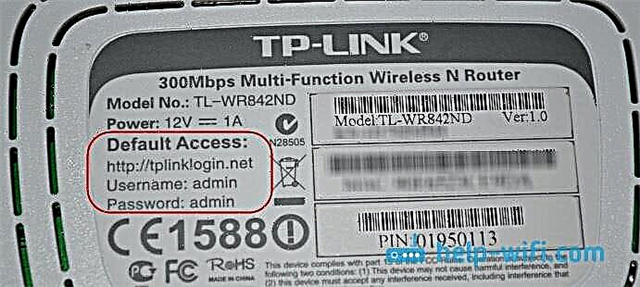
We go to the address in the browser, and specify the username and password.
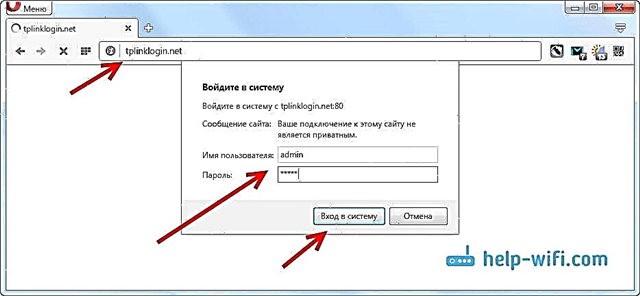
After these steps, the control panel should open. If you cannot enter the settings of the TP-LINK TL-WR842ND router, then read this article: what to do if you do not enter the router settings for 192.168.0.1 or 192.168.1.1?
If the router is not new, or you have already configured it yourself, then it is best to do a factory reset. Also, a reset must be done if the settings do not open, or the standard admin password does not fit.
To reset the settings and password on the TL-WR842ND, just press and hold the button for 10 seconds WPS / RESET... We look at the indicators on the front panel, they should all light up and go out. The router will reboot and the settings will be restored. Here is another detailed instruction on TP-LINK routers.
TP-LINK TL-WR842ND: Internet Setting (WAN)
First of all, we need to set up the internet. So that the router can connect to the provider and distribute the Internet to your devices. It is very important. If the router cannot connect to the provider, then the Internet will not work on your devices that you connect via cable or wireless. The connection will have the status "No Internet access". It turns out that the router will distribute Wi-Fi, but there will be no Internet access.
Before configuring, you should definitely know what type of connection your ISP uses. And if it is PPPoE, L2TP, or PPTP, then you also need to find out the username, password, and in some cases also the server address. All this information can be obtained from your Internet provider, or in the documents that were given to you upon connection.
Dynamic IP Connection Setting
If your provider provides you with the Internet using Dynamic IP technology, then there is practically nothing to configure. The Internet will most likely work immediately after connecting. But, let's check.
On TP-LINK routers, the settings for connecting to the provider can be changed on the tabNetwork (Net) - WAN... Select the connection type in the drop-down menuWAN Connection Type (WAN connection type). Accordingly, if we have a Dynamic IP connection, then we select this technology and save the settings.
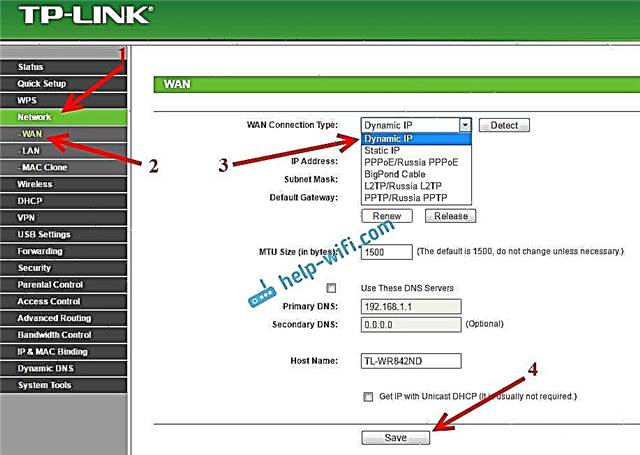
If the Internet does not work, then it may be that the provider is using MAC address binding. In this case, see the article on how to clone (change) the MAC address of the router.
Configuring other connections:
If your provider uses the connection typePPPoE, then select the appropriate connection, then specify the username and password that the provider issues. Next, select the "Connect Automatically" item.
Click on the button Connect (Connect), the router should connect to the internet. And the internet should already be working on the device you are setting up from. To save the settings, click Save (Save).
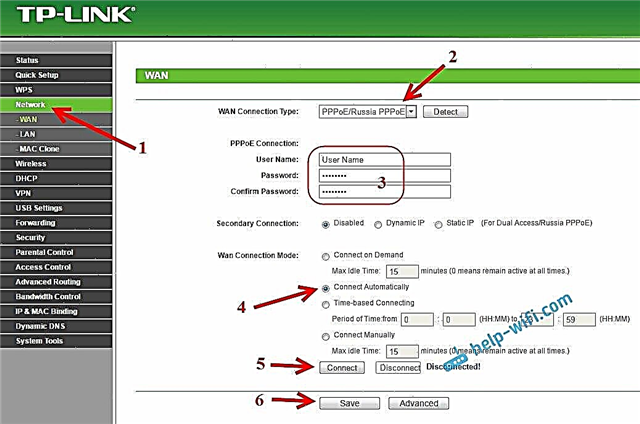
Everything is exactly the same here. We select the appropriate connection type, set the username, password, and IP address / server name (this information is provided by the provider). Then, put the switch next to the item "Connect Automatically" (Connect automatically).
Click on the button Save, and restart the router. Or, click on the Connect button to check if the router connects to the internet.
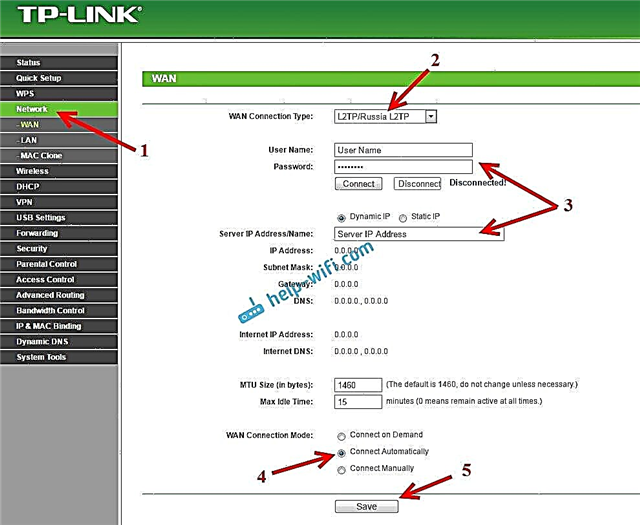
Many, after installing the router, start a connection to the ISP (high-speed) on the computer. And it turns out that the Internet through a router works as long as the connection is running on the computer. We turn off the computer, the Internet does not work through the router.
After installing the router, no connections are needed on the computer. The router will connect to the ISP itself; you just need to configure it. If you have any problems with the configuration at this stage, then the article will help you: when setting up the router, it writes "Without access to the Internet", or "Limited".
Only after the Internet through the router works, you can continue to configure our TP-LINK TL-WR842ND.
Wi-Fi setup and password setting on TP-LINK TL-WR842ND
So we have configured the Internet. You also need to change the name of the Wi-Fi network, if you are not satisfied with the standard one, and set a good password for Wi-Fi. This can be done in the settings, on the tabWireless (Wireless mode).
Here we are in the fieldSSID1 (Wireless network name) Come up with and write down a name for our wireless network.
I wrote at the beginning of the article that this router can distribute up to 4 Wi-Fi networks. And all these networks will have different names and passwords. If you need to make more than one wireless network, then check the box next to SSID2, SSID3, etc. And, if necessary, change their name.
Next, select your region where you live and click on the button Save (Save).

To set a password for Wi-Fi, go to the tabWireless – Wireless Security (Wireless - Wireless Security).
On this page, first of all, we enable the type of protection "WPA-PSK / WPA2-PSK"... On the contraryVersion (Version) select WPA2-PSK... And in the fieldPSK Password (PSK password) create and write down a password that will be used to connect to our Wi-Fi. The password must be at least 8 characters long.
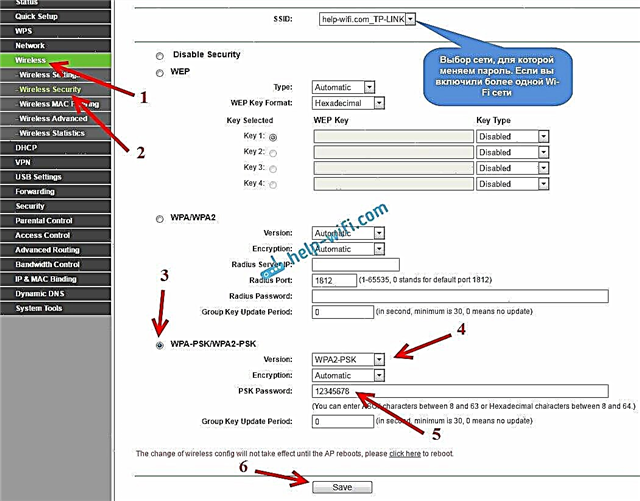
Do not forget to save the settings by clicking on the button Save.
Changing the password for entering the settings (admin)
We have already configured the Internet and wireless network. I also recommend changing the default admin password, which you need to enter when entering the settings of your router. This is necessary in order to protect the settings of the router. After all, everyone who connects to the router via Wi-Fi will have access to them.
Go to the tabSystem Tools – Password (System Tools - Password). Enter your old username and password there (default: admin and admin). And set a new username and specify a new password twice.
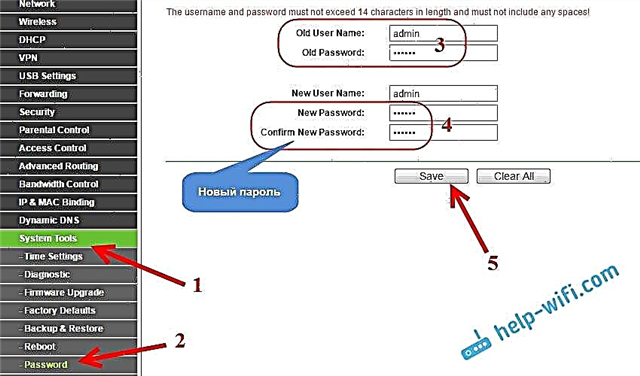
Save changes by clicking on the button Save... If you have not rebooted the router after setting up, then reboot. This can be done in the "System Tools" - "Reboot" tab. By clicking on the "Reboot" button. You can simply turn the power off and on.
This completes the configuration of the TL-WR842ND (TL-WR842ND (RU)) router. We have set only the basic settings, which are enough for the router to work. Try not to forget the password from the Wi-Fi network, and from the router settings. It is advisable to write them down somewhere.
You can ask your questions on the topic of the article in the comments. Only one request, describe your problem in detail, write what model and hardware version of the router. And also what is your provider.


